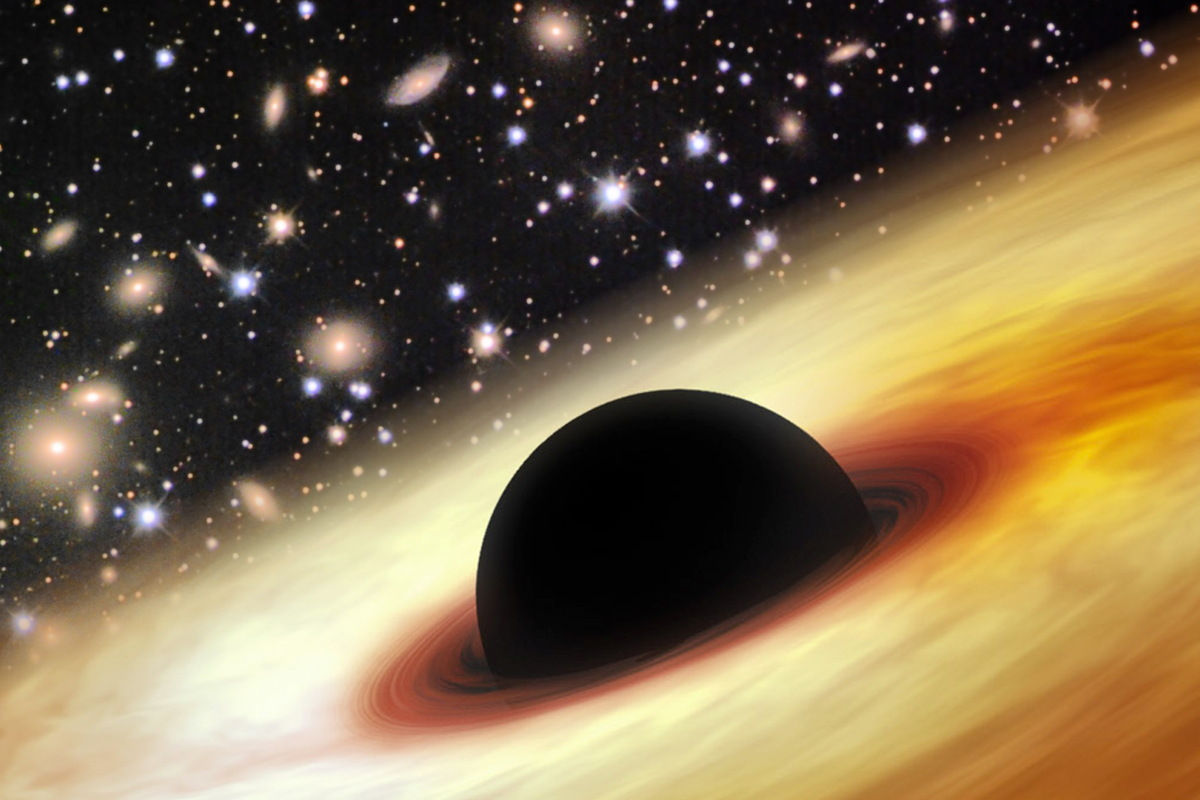In an astonishing discovery, scientists have found out thousands of black holes that are situated at the center of the Milky Way Galaxy. According to the new study, the center of the Milky Way packs more than 10,000 relatively small black holes that were not noticed by the scientists previously. The researchers are hopeful that these comparatively smaller black holes could throw some light into the history of the Milky Way and also could help understand other galaxies.
The study revealed that some of these smaller black holes interact with the stars as well as with the supermassive black hole “Sagittarius A-Star”. Lead author of the study Chuck Hailey, an astrophysicist at the Columbia University said, “The Milky Way is really the only galaxy we have where we can study how supermassive black holes interact with little ones because we simply can’t see their interactions in other galaxies.”
Hailey said that theirs is the only laboratory where this phenomenon could be studied. Scientists previously theorized that many black holes were present at the galaxy center but this is for the first time that they discovered thousands of small black holes at the center of the Milky Way. The black holes are almost 26,000 light years away from our Earth. According to researchers, black holes are formed when massive stars explode and collapse. Black holes are extremely dense objects and that is why they travel towards the center of the galaxy due to gravitational pull.
Astronomer Brooke Simmons, who was not involved in the study, said that having lots of black holes at the center of a galaxy is a fundamental consequence of gravity in those large systems that are made up of billions of individual objects with a variety of different masses. Scientists got hold of this big lot of black holes by using the data collected by the Chandra X-ray Observatory telescope. Actually, scientists got hold of more than dozens of binary black holes at the center of the galaxy. The binary black holes constitute a lower mass star and a black hole, that are trapped in a cosmic dance. It is very difficult to detect isolated black holes. So, scientists focused on the binary black hole systems. The X-rays emitted by the binary black suggested that there are more than 10, 000 black holes at the center of the Milky Way galaxy.
As per Wiki, a black hole is a region of spacetime exhibiting such strong gravitational effects that nothing—not even particles and electromagnetic radiation such as light—can escape from inside it. The theory of general relativity predicts that a sufficiently compact mass can deform spacetime to form a black hole. The boundary of the region from which no escape is possible is called the event horizon. Although the event horizon has an enormous effect on the fate and circumstances of an object crossing it, no locally detectable features appear to be observed. In many ways a black hole acts like an ideal black body, as it reflects no light. Moreover, quantum field theory in curved spacetime predicts that event horizons emit Hawking radiation, with the same spectrum as a black body of a temperature inversely proportional to its mass. This temperature is on the order of billionths of a kelvin for black holes of stellar mass, making it essentially impossible to observe.
Objects whose gravitational fields are too strong for light to escape were first considered in the 18th century by John Michell and Pierre-Simon Laplace. The first modern solution of general relativity that would characterize a black hole was found by Karl Schwarzschild in 1916, although its interpretation as a region of space from which nothing can escape was first published by David Finkelstein in 1958. Black holes were long considered a mathematical curiosity; it was during the 1960s that theoretical work showed they were a generic prediction of general relativity. The discovery of neutron stars in the late 1960s sparked interest in gravitationally collapsed compact objects as a possible astrophysical reality.
Black holes of stellar mass are expected to form when very massive stars collapse at the end of their life cycle. After a black hole has formed, it can continue to grow by absorbing mass from its surroundings. By absorbing other stars and merging with other black holes, supermassive black holes of millions of solar masses may form. There is general consensus that supermassive black holes exist in the centers of most galaxies.
Despite its invisible interior, the presence of a black hole can be inferred through its interaction with other matter and with electromagnetic radiation such as visible light. Matter that falls onto a black hole can form an external accretion disk heated by friction, forming some of the brightest objects in the universe. If there are other stars orbiting a black hole, their orbits can be used to determine the black hole’s mass and location. Such observations can be used to exclude possible alternatives such as neutron stars. In this way, astronomers have identified numerous stellar black hole candidates in binary systems, and established that the radio source known as Sagittarius A*, at the core of our own Milky Way galaxy, contains a supermassive black hole of about 4.3 million solar masses.
On 11 February 2016, the LIGO collaboration announced the first observation of gravitational waves; because these waves were generated from a black hole merger it was the first ever direct detection of a binary black hole merger. On 15 June 2016, a second detection of a gravitational wave event from colliding black holes was announced. As of April 2018, 6 gravitational wave events have been observed that have originated from merging black holes.
